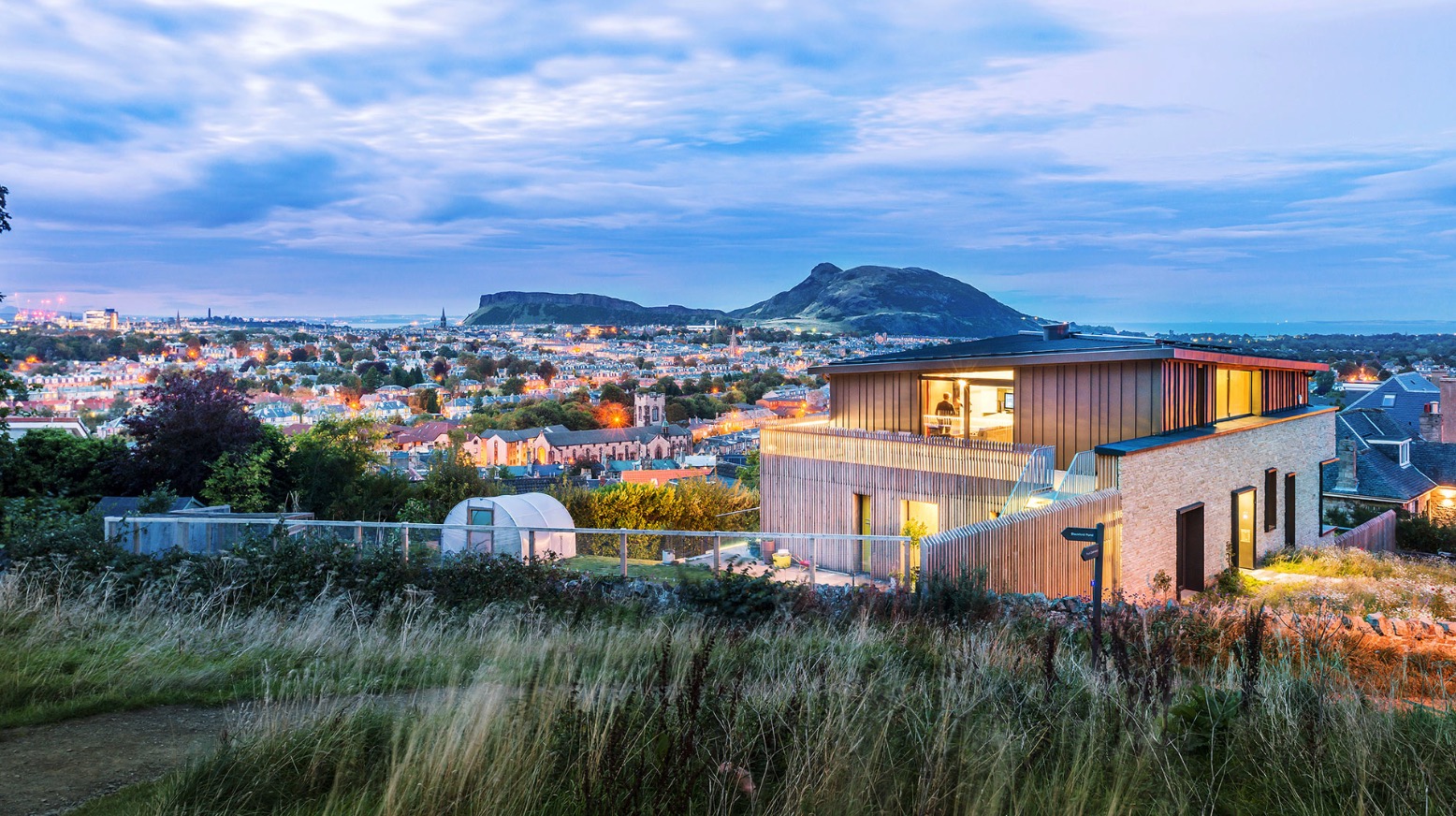Low carbon living: designing 22 Observatory Road

Climate change is one of the biggest issues facing Scotland and the world today. The materials we choose and how we design our buildings have a significant impact on responding to a changing climate and helps us reduce carbon emissions. This is explored in the Best Use of Timber Awards 2019 exhibition. We spoke to David Jamieson of ZONE Architects, about the process of designing and constructing the shortlisted project at 22 Observatory Road.
Why did you make the decision to use timber?
The requirement to build with timber was included in our client’s brief. They wanted to use as much timber as possible in order to reduce the carbon footprint of the building. The structure of the house is constructed from cross laminated timber (CLT) and this is left exposed on the inside of the building providing warmth and character to the interior and making the structure legible – this gives a kind of integrity and honesty to the building which we like.
Wood Fibre Insulation
We also specified wood fibre insulation which wraps around the outside of the house. This is more expensive than the more commonly used blown plastics products. Apart from the carbon footprint benefits, it ensures that the building construction is fully breathable. As the house is effectively air-tight to maintain as much heat as possible, breathability is important to ensure the health of the building fabric and protect it from the effects of moisture build-up.
Larch Cladding
The last significant use of timber is the larch cladding which covers about a third of the house. This was selected as it is naturally durable without any treatment. It was carefully detailed with a deep, ribbed profile and concealed balustrade fixings to add character and interest to the façade.
What were the biggest challenges in designing a new building in Edinburgh?
Getting planning permission was difficult and took over a year. There was a lot of resistance from neighbours to the construction of a modern house of two storeys in area of bungalows. In the end the planning application went to a nail-biting vote at the Council’s planning committee.
It was frustrating as the decision that was made by several councillors to vote against the house was clearly political and this should not be the case for planning applications.
What was your favourite part of the project process?
Seeing the house being constructed and working with the contractors for the year that it took to build. In Edinburgh we are fortunate to have so many skilled trades in joinery, masonry and metalworking and it’s rewarding to spend time on the building site working through problems in a team effort to achieve the best quality.
What is your favourite aspect of the finished project?
I like the shift on the roof ridge which transforms the house out of the ordinary and refers to the two major landmarks in the area – the Royal Observatory on Blackford Hill and the crags of Arthur’s Seat.
So far, the house is performing better than expected in terms of its energy usage, so the boiler is hardly turned on and hot water comes predominantly from solar panels. The family that commissioned it and have moved in are delighted and the design has exceeded their expectations.
What are your plans for the future?
We typically have half a dozen jobs on site and are excited to see two other one-off, zero-carbon housings being completed early in 2020, one is in the Scottish Borders near Kelso, the other in Newport-on-Tay. These have also been constructed predominantly with timber both in the structure, insulation and cladding.
It is a significant challenge to build a new house in Scotland with the difficulties of finding land, the problems with planning permission and the regulatory red tape that hits you when you apply for building warrant. And so, after at least two years of work it is very rewarding to see a family take up residence in a new home, especially if that home is zero-carbon and very low in energy usage.
Header image credit: Chris Humphreys
